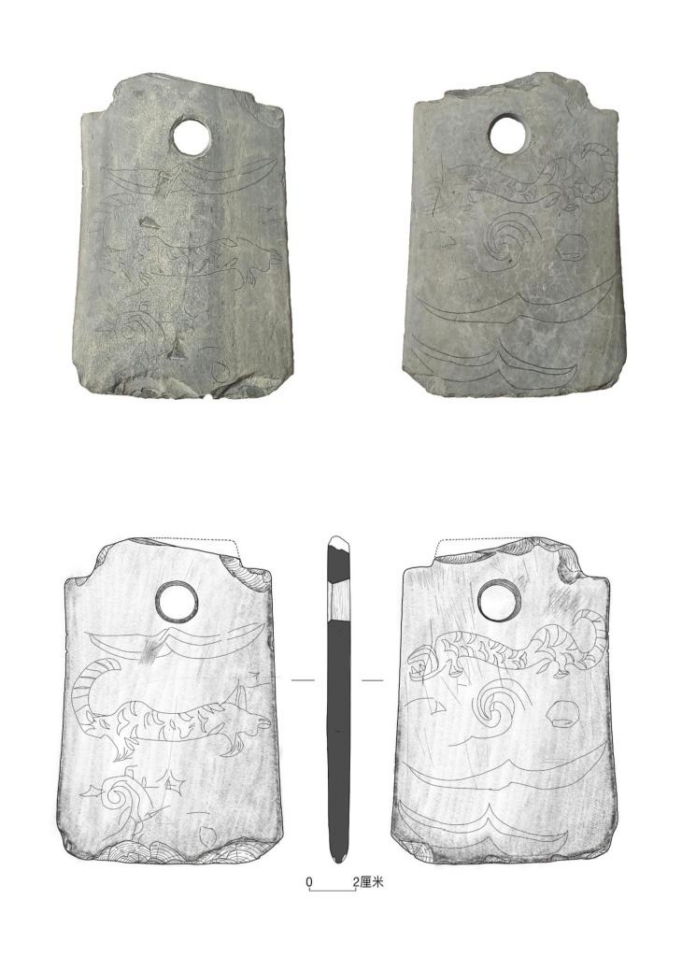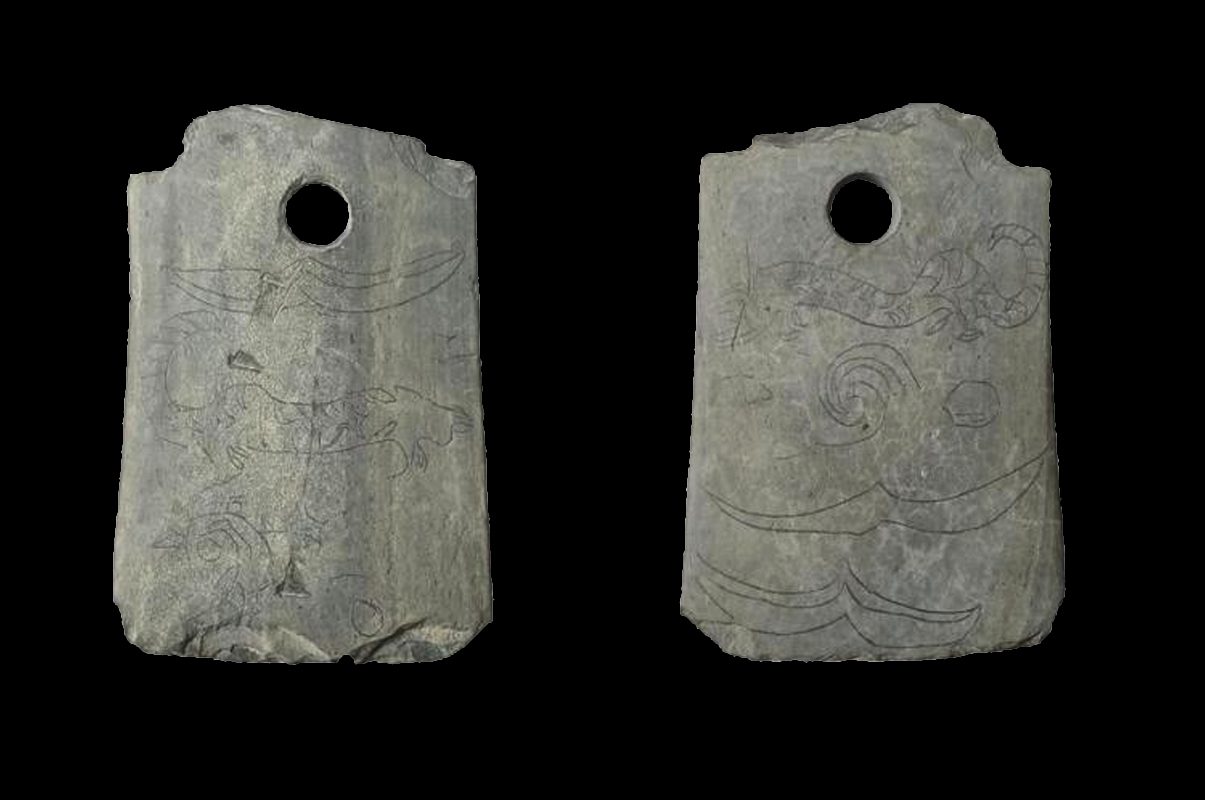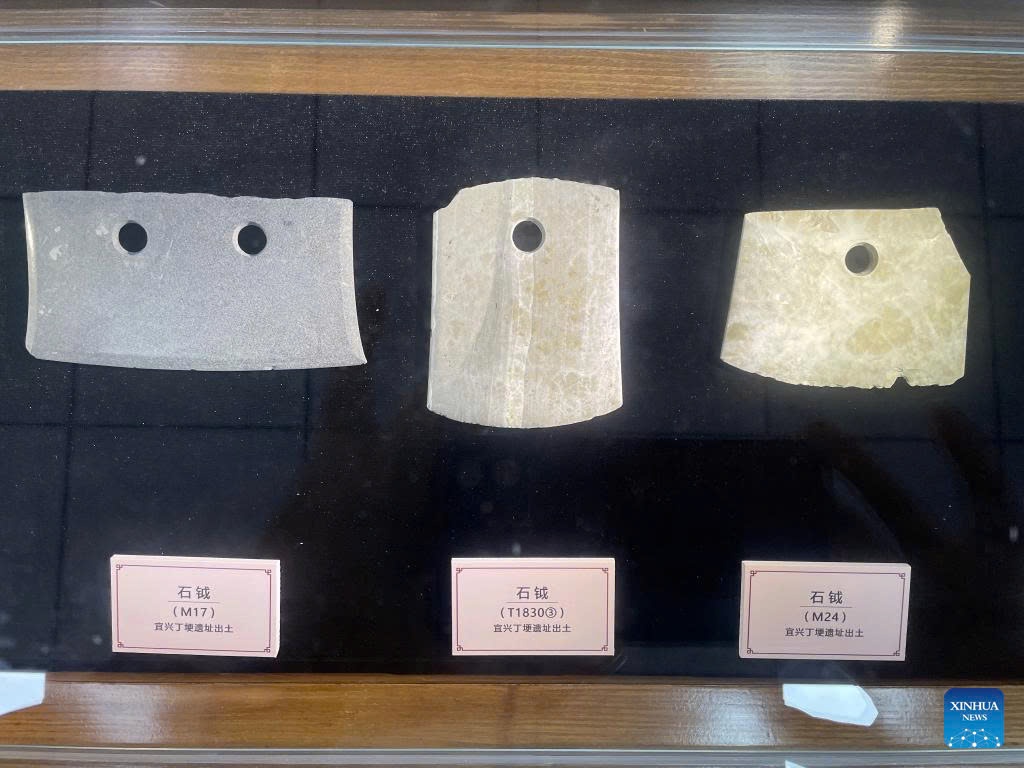Unearthed Legacy: 4,500-Year-Old Tiger-Engraved Ritual Axe from China’s Neolithic Past

The Liangzhu Culture: A Glimpse into China’s Neolithic Past

The recently discovered artefact hails from the Liangzhu Culture, one of China’s most sophisticated Neolithic civilizations. The Liangzhu emerged around 3,300 BC, with their urban center situated at the Liangzhu site, which was first uncovered in 1936. This culture is noted for its impressive developments in art, architecture, and social organization.
The Liangzhu were primarily located in the low-lying Taihu Plain, an area prone to massive flooding. These environmental challenges eventually contributed to the decline of the Liangzhu civilization, forcing its people to abandon their capital city and surrounding dwellings around 2,300 BC.
The Discovery in Wuxi City

The recent excavation in Wuxi City, located in Jiangsu Province, has provided archaeologists with a treasure trove of artifacts that offer further insight into the Liangzhu culture. At the Dinggeng archaeological site, researchers uncovered a total of 329 stone tools, along with 73 stone and bone arrowheads. Additionally, numerous ceramic and jade artifacts were found, each revealing the advanced craftsmanship of the Liangzhu people.
The Tiger-Engraved Ritual Axe

The most striking discovery from the excavation is a stone axe, estimated to be 4,500 years old, featuring intricate engravings of tigers on both sides. In addition to the tigers, the axe is adorned with patterns of clouds and birds, adding to its symbolic significance. Found on a sacrificial platform, the axe bears evidence of wear and damage, suggesting its use in rituals rather than as a weapon for combat.
Liu Baoshan, the head of the Wuxi Institute of Cultural Relics and Archaeology, highlighted the unique nature of the artifact, noting that the patterns were likely created using a harder stone tool. This discovery marks the first instance of a tiger-patterned stone axe being found in the region, emphasizing the cultural and symbolic importance of tigers in Liangzhu society.
Conclusion
The discovery of the 4,500-year-old tiger-engraved ritual axe in Wuxi City offers a fascinating glimpse into the spiritual and cultural practices of the Liangzhu civilization. This artifact not only reflects the advanced skills of the Liangzhu people but also serves as a testament to the rich history and enduring legacy of one of China’s most remarkable Neolithic cultures.
Video
News
The Hanging Temple: China’s 1,500-Year-Old Cliffside Marvel of Faith and Engineering
The Hanging Temple: China’s 1,500-Year-Old Cliffside Marvel of Faith and Engineering Perched precariously on the cliffs of Mount Heng in Shanxi Province, China, the Hanging Temple, also known as Xuankong Temple, Hengshan Hanging Temple, or Hanging Monastery, is an architectural…
The Willendorf Venus: A 30,000-Year-Old Masterpiece Reveals Astonishing Secrets
The Willendorf Venus: A 30,000-Year-Old Masterpiece Reveals Astonishing Secrets The “Willendorf Venus” stands as one of the most revered archaeological treasures from the Upper Paleolithic era. Discovered in 1908 by scientist Johann Veran near Willendorf, Austria, this small yet profound…
Unveiling the Maya: Hallucinogens and Rituals Beneath the Yucatán Ball Courts
Unveiling the Maya: Hallucinogens and Rituals Beneath the Yucatán Ball Courts New archaeological research has uncovered intriguing insights into the ritual practices of the ancient Maya civilization. The focus of this study is a ceremonial offering found beneath the sediment…
Uncovering the Oldest Agricultural Machine: The Threshing Sledge’s Neolithic Origins
Uncovering the Oldest Agricultural Machine: The Threshing Sledge’s Neolithic Origins The history of agricultural innovation is a fascinating journey that spans thousands of years, and one of the earliest known agricultural machines is the threshing sledge. Recently, a groundbreaking study…
Nara’s Ancient Sword: A 1,600-Year-Old Protector Against Evil Spirits
Nara’s Ancient Sword: A 1,600-Year-Old Protector Against Evil Spirits In a remarkable discovery that has captured the attention of archaeologists and historians alike, a 7.5-foot-long iron sword was unearthed from a 1,600-year-old burial mound in Nara, Japan. This oversized weapon,…
The Inflatable Plane, Dropped Behind the Lines for Downed Pilots
Experimental The Inflatable Plane, Dropped Behind the Lines for Downed Pilots The Inflatoplane from Goodyear was an unconventional aircraft developed by the Goodyear Aircraft Company, a branch of the renowned Goodyear Tire and Rubber Company, also famed for the Goodyear…
End of content
No more pages to load











